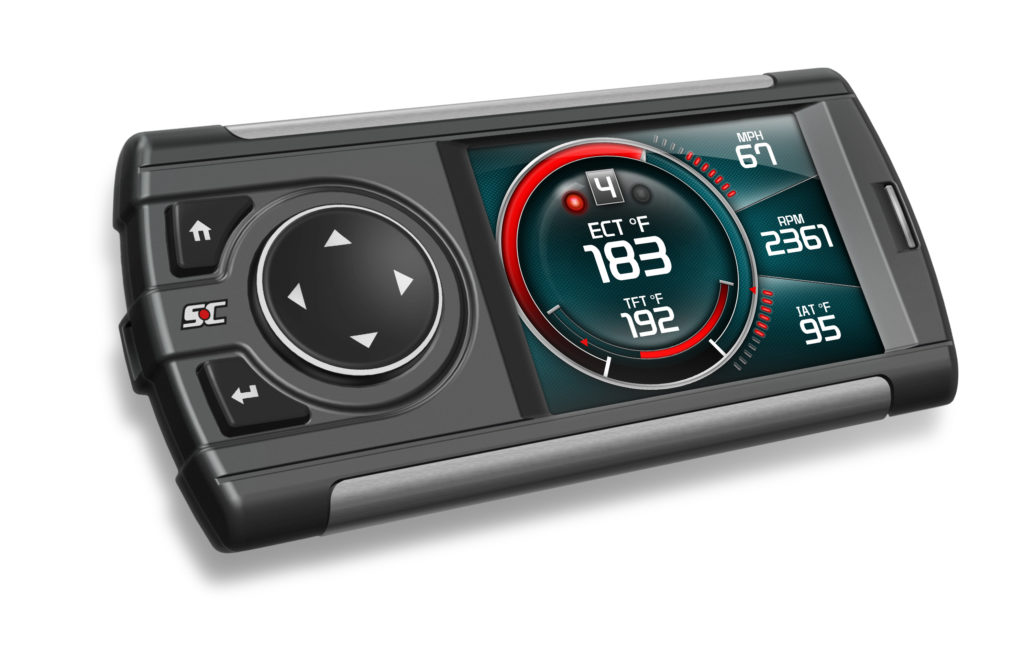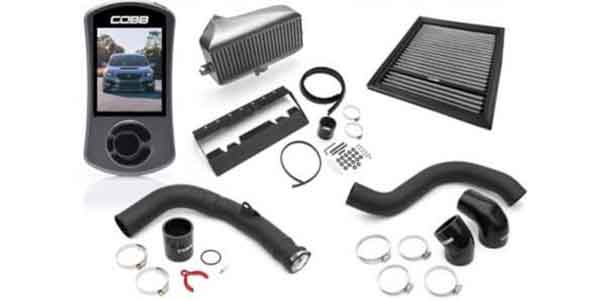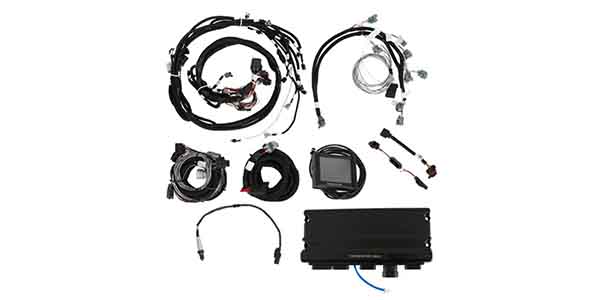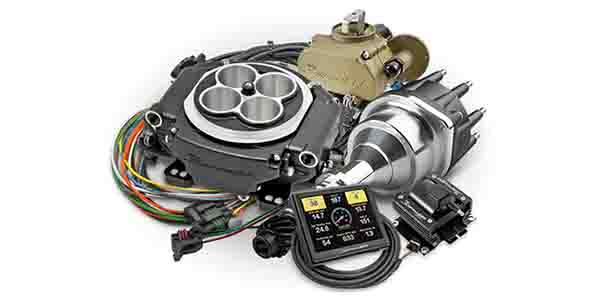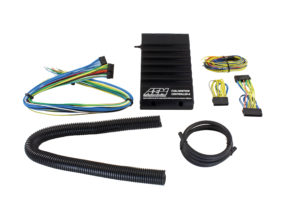
I just finished watching my favorite TV show – Discovery Channel’s Street Outlaws. A good portion of each episode is devoted to tuning these 2,000-3,500 hp monsters to get down the street without smoking the tires the entire 1/8th mile. However, you rarely see any hoods open or any adjustments to the engine taking place. Instead, a couple of guys are huddled around a laptop computer propped open on the roof reviewing data from the last run. The art of street racing (or any racing) these days is to have the ability to analyze the data recorded in the EFI module or stand-alone data acquisition and make fine adjustments to timing, fuel and boost to match the available traction in any gear. Essentially, the EFI module “drives” the car as much as the driver does.
That’s all pretty intriguing and romantic to me, but I, like most of you, won’t be appearing soon on the next episode of Street Outlaws. It is a good example of how much the performance scene has transformed in a very short time.
Electronics have taken over and it has turned out to be good thing – a great tool, not the end of performance cars as we predicted it would be back in the ’80s. In fact, a carbureted vehicle in the performance world is now the exception, reserved for restorations and muscle cars. Current engine swaps, late-model, bolt-on modifications and complete project car builds are now using computer-controlled EFI powertrains. To deal with modifications and customization these computers may need re-flashing, or more accurately, reprogramming and in many cases a new stand-alone EFI module.
Like most of you, I have several electronic devices of which I only use about 20% of their capability. My iPhone is a perfect example; it shoots great photos and video, gets email and browses the internet, sends and receives text messages and is a pretty good phone as well. That’s the 20%; I haven’t explored the thousands of apps, voice recognition, Siri, etc.
The point is that when it comes time to upgrade your existing vehicle’s computer or adding a new stand-alone EFI module, do your homework and find the unit that best fits your needs. Don’t spend your money on features that you don’t need and will never use. If ever the KISS rule (keep it simple stupid) applies, its here. Connectivity, sensor placement and integrations into your vehicle’s existing electrical grid become more complex as you add EFI module capability.
Of course, there is an exception to every rule. If you are building a racecar or project vehicle that will keep evolving with additional power adders, or if your engine is a max-effort engine that could benefit from very precise (cylinder-by-cylinder) tuning, then you should invest in a more robust engine management system than your current needs might be.
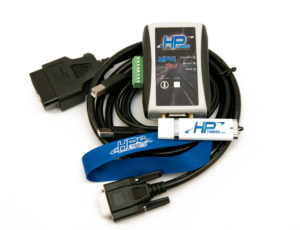
Handheld Tuners
Today’s vehicles place massive requirements on their ECUs with engine demands such as drive-by-wire throttles, variable camshaft timing and individual ignition drivers, plus add the sensors and inputs from the drivetrain, body and chassis, and it is virtually impossible to substitute the factory ECU with an aftermarket unit and maintain the same functionality (not to mention emissions legality). So most shops and enthusiasts re-flash the memory in the OE engine management system with handheld tuners that simply plug into your OBD II port under the dash. For most modern performance cars that are stock with possibly an air intake and exhaust that’s all you need to unlock the power you are looking for.
These reasonably-priced handheld devices will download and store your stock program and allow you to upload one of three pre-programmed performance levels that not only controls fuel mixture and timing, but also electronically controls transmission functions such as shift rpm and shift firmness. Many are 50-state-legal and a few accept “third-party programming.” This feature is especially important if you have made bigger modifications such as a supercharger, nitrous or turbocharger system. Diablosport and SCT for example have dealers across the country that can test your vehicle and develop a custom tune for your exact combination.
AEM’s Fuel/Ignition Controller (F/IC) is a unique device that deserves mention here. It runs in parallel with the factory ECU and OBD II. It is designed for aftermarket superchargers and power adders on production vehicles. AEM’s F/IC allows the tuner to compensate for the boost with timing retards and added fuel enrichment and it works with or without variable cam timing.
For more advanced enthusiasts and tuner shops there’s the very popular HP Tuner software that requires a PC laptop. But it lets you custom design your own program or install a tune from one of your friends on your favorite forum. Don’t worry, you can save your factory program and there is a recovery path if you get too far lost in the data. AEM offers a unique product, its Series 2 “Plug-n-Play” module that plugs into the vehicle’s factory wiring harness, yet enables full programming capability.
It seems that each handheld tuner manufacturer has its specialty niche: Superchips and Edge Products are focused on gas and diesel trucks, SUVs and Jeeps. Diablosport , Hypertech, SCT and FAST have the performance car market covered. Some units offer re-calibration capability for gear ratios, tire sizes and speedometer correction, while others like Hypertech’s Max Energy 2.0 offers a myriad of trans adjustments and throttle response settings to fit your driving style. It’s a case of finding out what features and benefits you want, and what price you are willing to pay.
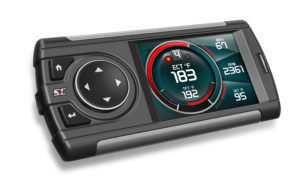
Power increases with these devices vary greatly depending upon the vehicle being tuned. With diesel trucks you can routinely see a boost in excess of 100 hp. On modern turbocharged gas vehicles, like Ford’s popular Ecoboost models, horsepower gains in the 70 hp range are not uncommon. Non 50-state normally aspirated performance vehicles typically see 15-50 hp gains depending upon fuel quality and coolant temperatures. These are good gains for the money invested and the fact that you don’t even need to get your hands dirty.
A few final comments about the handheld tuner market: it is quickly evolving technology with some of the latest innovations such as SCT’s “wireless” tuning through the OBD-II port that can be adjusted and the data monitored on your Android smart phone. So beware of how old the technology is that you are buying and what is coming out in the near future.
Secondly, many of the handheld tuner companies offer excellent compact gauge packages that really enhance the tuning experience. Some of these same manufacturers offer power packages with tuner, air intake and exhausts at a savings of purchasing these products individually, so if you are just starting on your modification path, this could be the way to go.
Stand-Alone EFI Modules
What to do when a factory ECU is inadequate or not compatible with your vehicle or vehicle build? The only answer is to use a stand-alone EFI module from an aftermarket source. You may simply be in the market for a module that will get your vehicle’s engine swap fired up and running down the road, or you may be building a serious competition vehicle that needs all the technology you can throw at it. The point is – do your homework – know what your needs are. If you are installing a new LS3 crate engine and 4L80E transmission, know that your EFI module will need drive-by-wire throttle capability, coil-on-plug ignition drivers and electronic transmission controls for the 4L80E. Yup, it can get complicated real fast.
If you are building a big horsepower race vehicle then you should look for an EFI module that supports two fuel injectors per cylinder with sequential injector firing, coil-on-plug ignition drivers, multiple-bar boost sensor, dual knock sensors, rpm switches for nitrous control, multiple rev limiters, data acquisition, traction control, etc.
For many years, when EFI was in its infancy, there were very few choices for stand-alone EFI modules. Motec was, and still is the top of the heap with professional teams that have experience and the know-how to make it function. But it was and still is expensive. Electramotive was one of the early pioneers that was more affordable for the average racer, and less complex than Motec. Early on, drag racers embraced John Meaney’s Big Stuff engine management and there are still many devoted followers of the Meaney brother’s Big Stuff3 version.
That was the EFI module landscape some 20 years ago and they have stood the test of time. However, there is a new crop of EFI modules that are taking the market head-on. Probably the newest and most significant unit is Holley’s Dominator EFI module. It retails for approximately $2,000 and it has all of the features required to run a state-of-the-art racecar and the newer technology associated with today’s high-tech performance cars. The Dominator may be overkill for a LS or Coyote engine swap but they have the technology to handle it except to control variable valve timing, though other add-ons can probably address that.
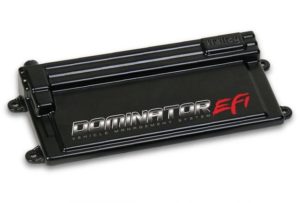
Another player in the EFI module market is FAST with its XFi 2.0 that is feature-laden but data logging and traction control are optional. Many worthwhile and cool features that are included in the XFI are emergency engine shut-off due to low fuel or oil pressure, possibly saving that very expensive engine until that problem can be resolved. AEM was first a big player in the import market, but now offers its Infinity Series 3 ECU for Chevy, Ford and Chrysler crate engines (including VVT models). It looks to be ideal for the more basic engine swaps with these modern engines. AEM’s Infinity Series 7 is its full-race model for engines with up to 10 cylinders.
A not-so-familiar company, EFI Source is well known to tuners and EFI junkies on the message boards. It has a close relationship with MegaSquirt and has developed its own stand-alone modules as well. Its products are very sophisticated and full-featured (including individual 4-cam timing control on its new Coyote module), plug-and-play wiring harnesses and enough processing speed and power to run the most extreme race engine. It requires the use of a laptop and tuning software from TunerStudio.com. However, it is priced in the $1,200-$1,300 range, which is a bargain in this part of the market. EFI Source offers plug-n-play systems for GM LS engines, Gen III Mopar Hemis and most recently, Ford Coyote engines.
DIY EFI Module
What hot rodder wouldn’t want to build his own personal EFI module? Probably not many, but the cost savings could mean the difference between having a state-of-the-art ECU or not. MegaSquirt offers do-it-yourself kits that let you build your own ECU at considerable savings, or you can buy a completed version from them. The support group is huge and the factory support is good. Several car magazines have taken on the challenge with good results. If magazine editors can do it – anyone can! MegaSquirt offers three models from the most basic to full-race modules.
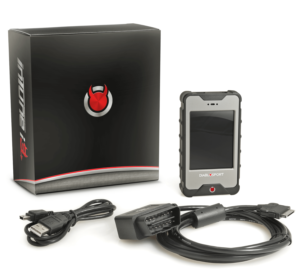
Conclusion
While we have touched on some of the larger manufacturers here, there are several smaller companies we haven’t mentioned. Many of these companies make niche and unique products that serve the EFI industry well. So do your homework and search the “net” for what you need. Remember, one of the most important things to consider when purchasing an EFI module is the amount and quality of factory support available for the product. A simple phone call or email will help you determine how accessible that support will be. Don’t forget – tell them that Engine Builder sent you. ν

